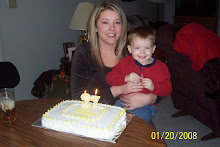

Bridge to Terabithia, the novel, was originally written by Katherine Paterson, and won the Newbery Medal for this book. For this comparison, I read half of the book watched the movie, and then finished up with the book. I am not sure why I did it that way, it just worked out like that this time. This is a rare occassion where I actually liked the movie better than the book. The book was copyrighted in 1977, and the language and tone of the book reflects that time. The movie was a more updated version, and for some reason I seemed to relate to this better.
In both stories, Jess and Leslie become friends, which it seems at first is out of convenience and location than anything else. As the story evolves, they become very close, and venture into the woods to form an imaginary world, which they name Terabithia. Jess and Leslie are king and queen of Terabithia, and the creatures in this world often reflect people they encounter in their daily lives. This world is an escape for both of them. Neither child is well-liked at school or paid much attention to at home. Their imaginary world becomes a place where they can call the shots and actually feel in-control of something.
When Jess goes off on a private field trip with Ms. Edmunds (their music teacher) he has a brief notion of asking Leslie to come along, but decides against it. He has a crush on Ms. Edmunds and wants this time with her to himself. It is a fatal decision, because Leslie decides to go to Terabithia without him, and "magical rope" that swings them from one world to another breaks over the creek and Leslie dies. This affects Jess deeply, but he soon gets it together and passes on the magic of Terabithia to his little sister, May Belle.
The movie followed along closely with the story, with a few updates for a newer generation and some theatrical effects to enhance the experience. I actually liked AnnaSophia Robb in this movie better than I did in Because of Winn Dixie, she seemed to have grown up a little bit and was a better actress in this movie. While I did enjoy the movie better than the book, it was still not was I was expecting when I first saw the previews for this movie. I expected it to be a little more like The Chronicles of Narnia in that the other world was a little less make-believe and more of a real place. The fantastical creatures in the movie mostly focused on the evil, fighting ones (which I had to shield from my son), instead of the beauty they saw in Terabithia.
Both the book and movie were still highly enjoyable, and I would recommend them to anyone!
Sources:
Paterson, K. (1977). Bridge to Terabithia. New York: HarperTrophy Publishers.
Csupo, G. (Director). (2007). Bridge to Terabithia [Motion picture]. United States: Hal Lieberman Company.
www.barnesandnoble.com Book image retrieved 4-4-08.
www.imdb.com/title/tt0398808. Image and information retrieved on 4-5-08.




